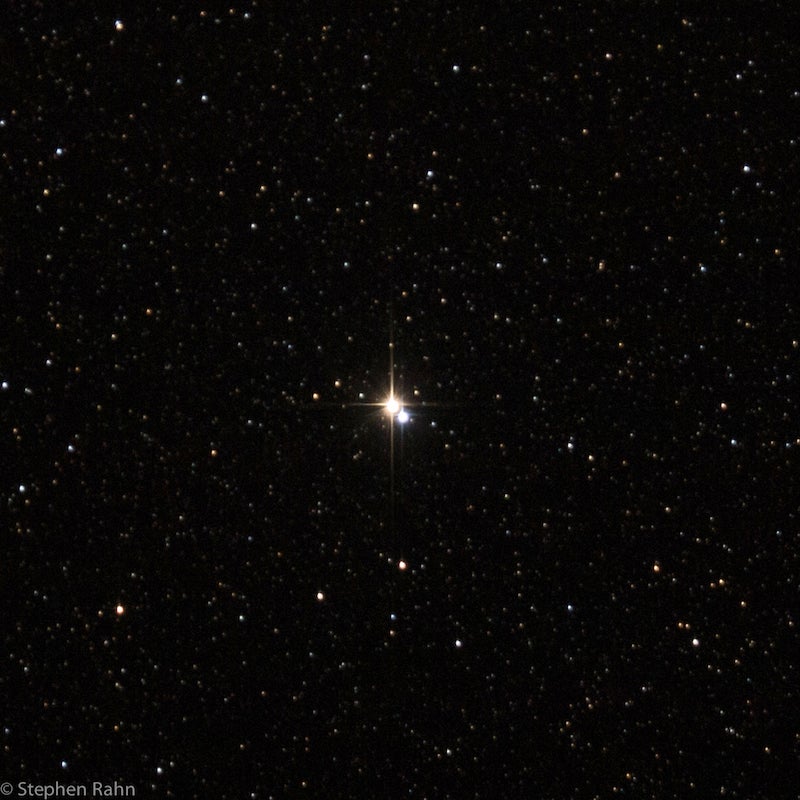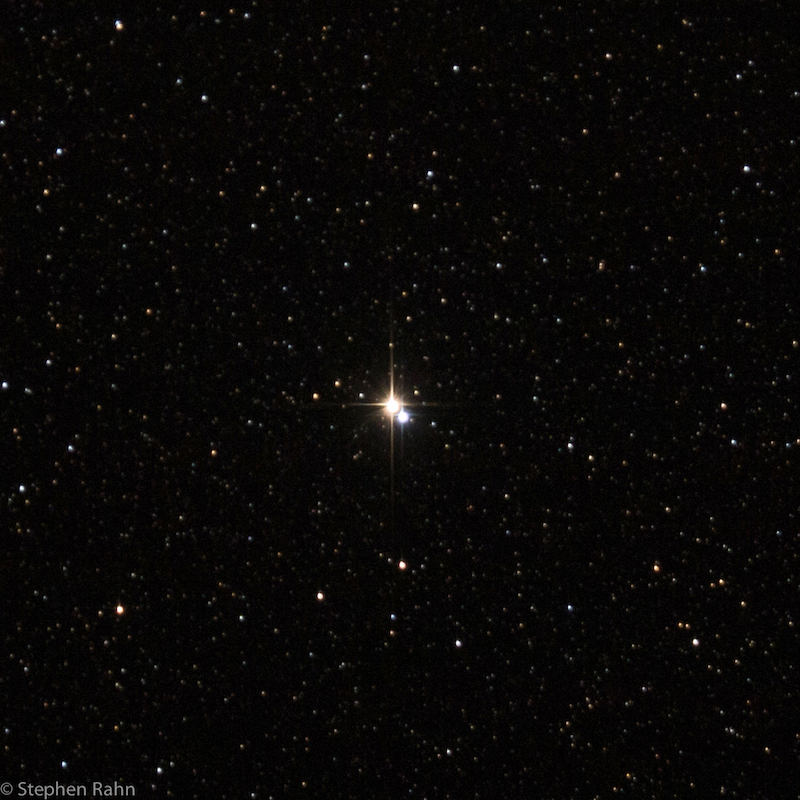Because of the way our eyes see combinations of frequencies of light, green can never dominate the color of a star.

The double star Albireo in Cygnus shows off beautiful contrasting colors of orange and blue, which also reveal the stars’ differing temperatures. Credit: Stephen Rahn
On the color-wavelength spectrum, green falls between yellow and blue. Why are there no green stars?
Jeff Franklin
Surprise, Arizona
This is an excellent question! It seems weird, right?
The color of stars, or anything that gets really hot, is connected to its temperature. This is because hot objects emit light, which is called thermal radiation. The color of this light — or in physical terms, its frequency — depends on the temperature. As any object gets hotter, it emits more and more of its light at higher frequencies. The same way it takes you more energy to jump at a faster rate, it takes more energy to emit light at higher frequencies. These higher frequencies appear blue to our eyes, while lower frequencies appear red. So as an object gets hotter, it generally gets bluer. As a result, the hottest stars appear to us as blue, but cooler stars appear red.
So why can’t stars with temperatures in between appear green? The answer is a result of the way our eyes see combinations of frequencies: Our eyes add up all the colors that come in, and the color we see is the result of this addition.
“Green” is a very specific frequency, but stars emit light smoothly across a broad spectrum. Think of this spectrum like a playground seesaw with a rainbow painted on it, blue on one end and red on the other. This seesaw tilts based on temperature, and the color we see is a mixture of all the colors on the seesaw. Here’s the trick, though — we see more of whichever colors are higher off the ground. If a star is really hot, the blue end is tilted up, so blue dominates over the other colors and we see this star as blue. If it’s cool and the red end is tilted up, red dominates and we see this star as red.
On a seesaw, you can’t make the middle any higher than the ends. If the temperature is moderate so that we are in the middle of the board, then the board remains horizontal and we have to add up all the colors equally, which comes out as white. In fact, that’s why our own Sun is white — its temperature corresponds to a frequency in the middle of the seesaw.
Green is also near the middle of the seesaw, but there is just no way to tilt the seesaw to make green higher than any other color; our only options are blue, white, or red.
Matthew Murphy
Graduate Student, Department of Astronomy and Steward Observatory, University of Arizona, Tucson

